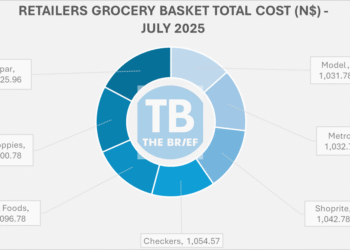
By Junias Erasmus
In any thriving organization, employee motivation is the cornerstone of sustained success. For an organization to truly excel, it must inspire its people to do more than just complete tasks; it must foster an environment where employees feel genuinely invested in their work and empowered to achieve both personal and collective goals.
The best way to achieve this is through a thoughtful blend of intrinsic and extrinsic motivational strategies that align individual satisfaction with organizational vision.
Intrinsic motivation stems from within, an employee’s personal desire to grow, achieve mastery, and contribute to meaningful work. When employees are intrinsically motivated, they find satisfaction in the work itself and feel a deeper connection to their role and the impact they make. To nurture this form of motivation, leaders should encourage autonomy, provide opportunities for personal growth, and connect employees to the organization’s purpose.
This can be as simple as offering challenging projects that allow employees to develop new skills or involving them in goal-setting to enhance their sense of ownership. When people feel their work matters, they are naturally more engaged, innovative, and committed.
On the other hand, extrinsic motivation involves external rewards such as recognition, financial bonuses, and career advancement opportunities. Extrinsic motivators play a vital role in reinforcing and rewarding behaviors that drive organizational success. Performance-based incentives, public acknowledgment, and structured reward programs can create a sense of achievement and encourage employees to aim higher.
For example, a well-crafted rewards system that celebrates individual and team accomplishments encourages a healthy drive for excellence and helps foster a culture of recognition and respect. Extrinsic rewards, when aligned with intrinsic motivators, provide employees with validation and make their efforts feel worthwhile.
The most effective motivational strategy, however, is a balance of both intrinsic and extrinsic approaches. By blending these two forms of motivation, leaders can create a culture where employees are both inspired by personal growth and motivated by recognition. Imagine a workplace where employees pursue meaningful projects aligned with their strengths and values, while also receiving tangible rewards and acknowledgment for their hard work. This combination fuels a workforce that is not only productive but also fulfilled.
Integrating intrinsic and extrinsic motivation is the key to organizational success. By fostering an environment that values both personal satisfaction and external rewards, leaders can inspire employees to bring their best selves to work every day. A well-motivated workforce is empowered, engaged, and aligned with the organization’s mission, driving success that benefits both individuals and the organization as a whole.
*Junias Erasmus works in the Financial Sector. He is a Scholar & a Motivational Speaker. This article is written in his personal capacity. For inquiries, contact him at Junias99@gmail.com











